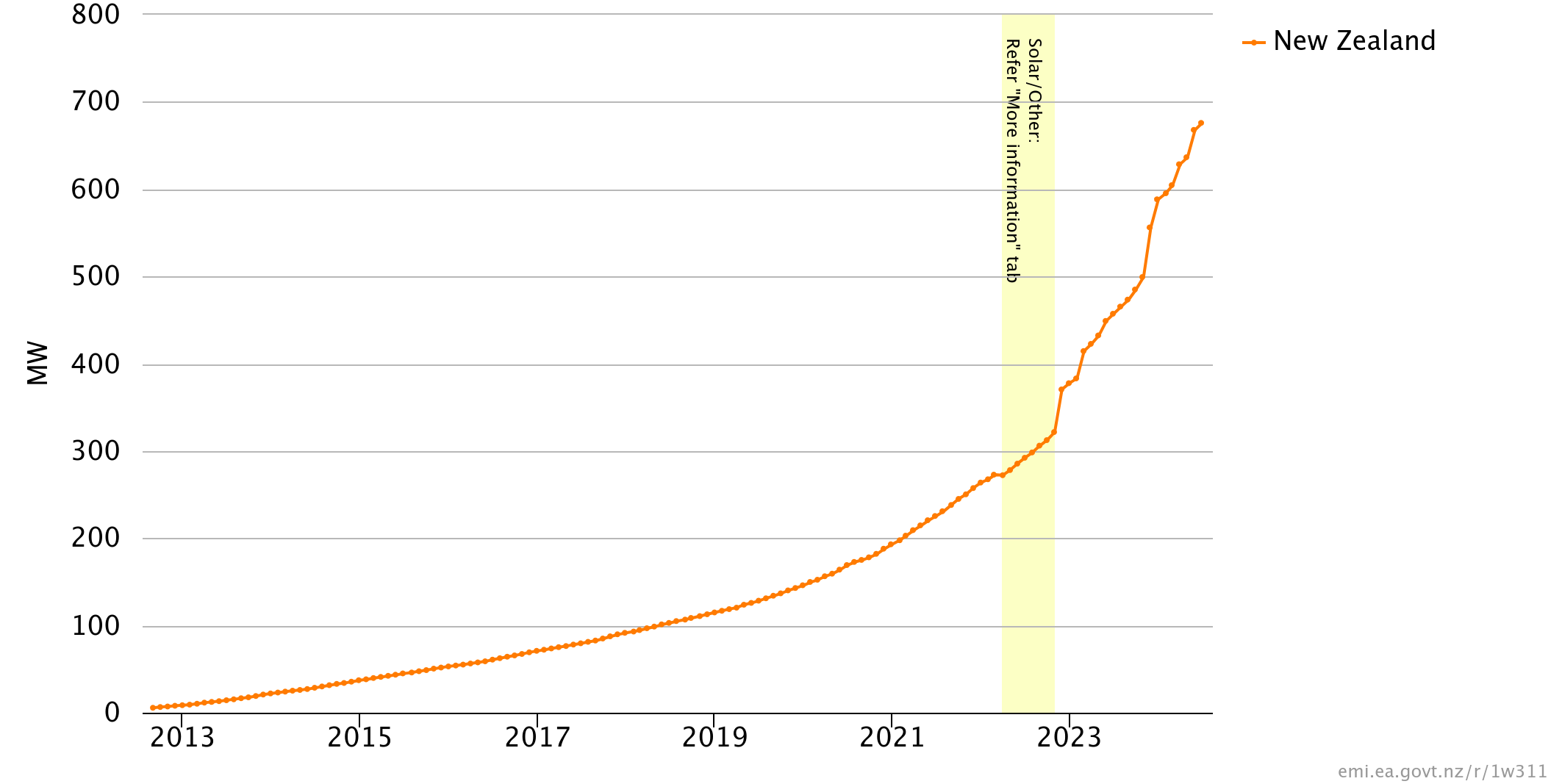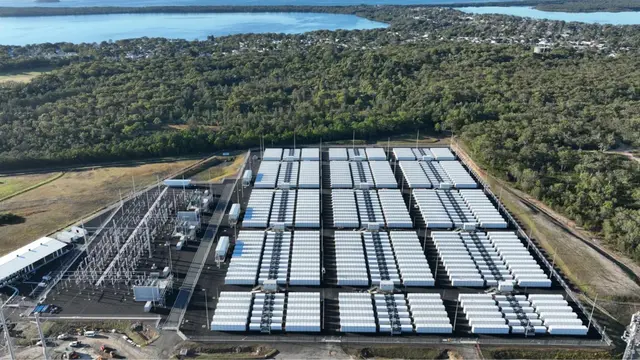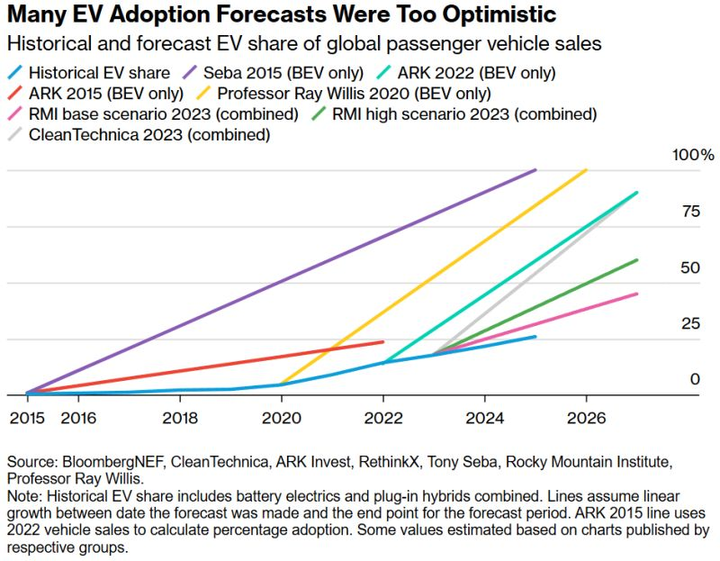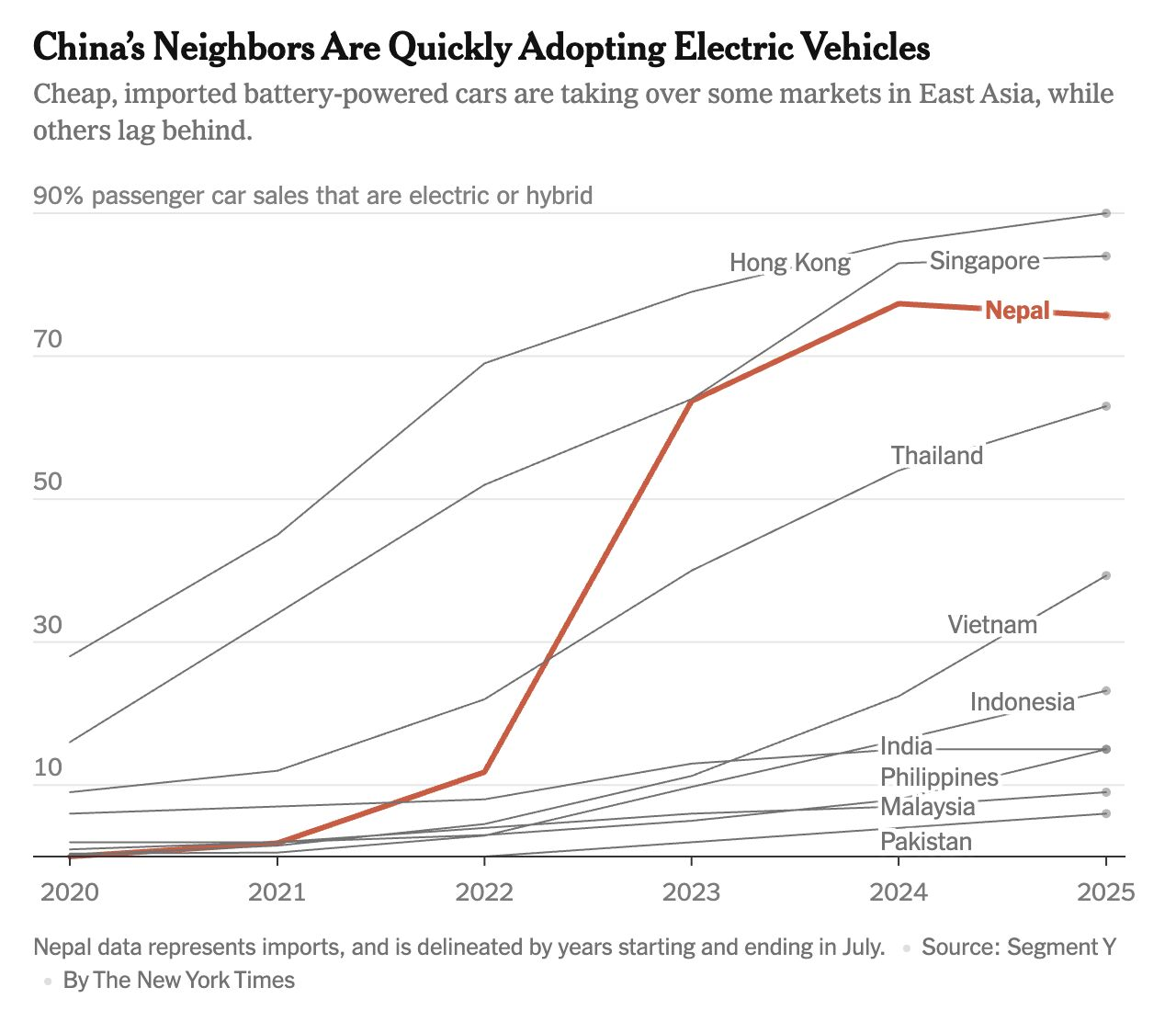Up the Kilowahs! Checkout the EDB Scoreboard



The big solar installs continue in New Zealand at Go Media Stadium and Ngā Hua e Whā, the largest marae in the Southern Hemisphere; rooftop solar closes in on our biggest power plants; the world's biggest battery is switched on in Australia and lots of small batteries play an important role in California; Bloomberg looks at the incorrect predictions on EV adoption and how they're wrong in both directions; it's not just the wealthy countries adopting EVs as Nepal hits 76%; GM gets the record for longest drive on a single charge; and dads like electric stuff.

Light it up
The big solar installs keep coming in New Zealand and Go Media Stadium in Auckland has switched on 1,651 solar panels - becoming what it says is the first stadium in New Zealand to do so.
The new system will generate around 800 MWh a year, which is equal to 60% of the stadium’s total energy usage, lower its carbon footprint, and generate $150k of savings each year. The investment is expected to pay for itself within six to eight years. If only they could harness the energy of a Warriors crowd and stick that in a battery.
Down south in Christchurch, there’s now over 350 panels powering Ngā Hua e Whā, the largest marae in the Southern Hemisphere. This produces 64% of the marae’s energy needs and will save around $1,600 per month. The battery means it can also act as a community hub in emergencies.
We’re coming from a very low base in New Zealand, but it's picking up and the combined generation from rooftop solar in New Zealand is now bigger than all but two of our power plants, Huntly and Manapouri.

A battery of tests
As Sir Mix-a-lot famously sang, we like big batts and we cannot lie. And the world’s biggest was just switched on across the ditch.
“The A$1 billion grid-scale battery will supply power to nearly one million homes for an hour.” And it will play a crucial role in balancing the grid, largely because of all the solar in the system.

It’s not all about the big batts, however. As Electrek wrote, the small battery fleet gave a big assist to the network in California recently:
More than 100,000 home batteries across California stepped up as a virtual power plant last week in a scheduled test event, and the results were impressive, according to new analysis from The Brattle Group.
Sunrun’s distributed battery fleet delivered more than two-thirds of the energy during a scheduled two-hour grid support test on July 29. In total, the event pumped an average of 535 megawatts (MW) onto the grid – enough to power over half of San Francisco.
EV does it
This week we published an explainer on why the climate needs electric vehicles. There are plenty of opinions on the matter. And plenty of predictions, too.
As Bloomberg wrote, OPEC (not surprisingly) underestimated the rapid uptake of EVs and its estimate for pure electric car sales was “hit at the beginning of 2020, a remarkable 20 years earlier than OPEC anticipated”.
Others (including some big investors like Cathie Wood’s Ark) have also been wrong with their predictions, but in the other direction, as the chart below shows.

The IEA has consistently underestimated solar uptake and it pays to remember that solar first became practical in the 1950s, trundled along for decades and is only now having its moment in the mainstream because the price has come down so much.
Many seem to have underestimated how good China is at making cars, so it will be interesting to see if adoption rates start to pick up speed and get closer to those optimistic predictions. As EVs close the gap on upfront costs with fossil fuel cars and as V2X becomes a reality, we predict the only way is up.
China’s neighbours certainly seem to be benefitting and, while the argument is often that it’s just rich countries that can afford EVs, that isn’t always the case. As the New York Times reported, 76% of all car imports in Nepal last year were electric or hybrid vehicles, up from basically nothing five years ago.

A lot of the EVs being sold in Asia are replacing smaller, dirtier vehicles that have a major effect on air quality. This is often an underappreciated part of the EV transition and, as the Atlantic wrote, America is missing out on the biggest EV boom of all, the electric rickshaw.
In the long run
EVs continue to drop in price, and they are also getting better. GM broke a record recently after a modified Chevy Silverado drove over 1,600km on a single charge.
It wasn’t being driven in real-world conditions (i.e, very slowly and with no aircon), but it’s still pretty impressive and new battery technologies promise to bring significant improvements.
Electrify your dad

How the sun led to higher salaries for teachers in the US and why this should be happening here, too; how "the once-rigid link between economic growth and carbon emissions is breaking across the vast majority of the world" as electrification gives more countries a productivity boost (and how that would allow New Zealand to keep embracing our long, languid summer break); solar continues to weather storms and provide 'free resilience'; Dunedin laundry company Preens goes electric and saves over 300 utes worth of emissions; the company that wants you to drink diesel exhaust; and a wonderful rundown of the Kill Bills tour - and the national electrification opportunity - from one of the tour sponsors.
Read moreDownload
As gas supplies decline and prices rise, electrification is the best bet, but it's hard for big businesses without government support. Kirsty Johnston talks to Rainbow Nurseries about how it made the switch with help from a grant, and others who are unsure they will be able to keep getting gas. As one busines owner said: "We never considered the risk to the business of not actually having natural gas," one participant said. "We always expect that the price could fluctuate… But we never anticipated maybe having no gas coming from the pipeline." There are ways for the Government to help. And there is a huge amount of new renewable electricity coming on stream, so there won't be a shortage of electrons.
Read moreDownload
Marc Daalder reports on Vector's declining gas network and how it is responding to falling customer numbers. As he writes: "Gas in Auckland is formally past its peak in the latest forecasts from Vector, the city’s only gas distribution business, with new connections set to fall to zero in three years ... From 2029, there would be no new residential or commercial connections – with new industrial connections projected to have already ceased this year."
Read moreDownload